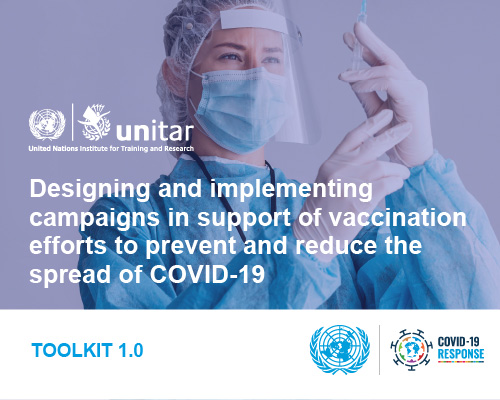The world is in the midst of a COVID-19 pandemic. Countries are racing to develop and deploy safe and effective vaccines across the world.
Vaccines save millions of lives each year. Vaccines work by training and preparing the body’s natural defences – the immune system – to recognize and fight off the viruses and bacteria they target. Vaccines are a critical new tool in the battle against COVID-19 and it is hugely encouraging to see so many vaccines proving successful and going into development. Working as quickly as they can, scientists from across the world are collaborating and innovating to bring us tests, treatments and vaccines that will collectively save lives and end this pandemic.
Reflecting on this issue, UNITAR presents this toolkit that contains assets to assist local and national efforts to control the spread of COVID-19 and bring about its eventual eradication through vaccination and communication.


